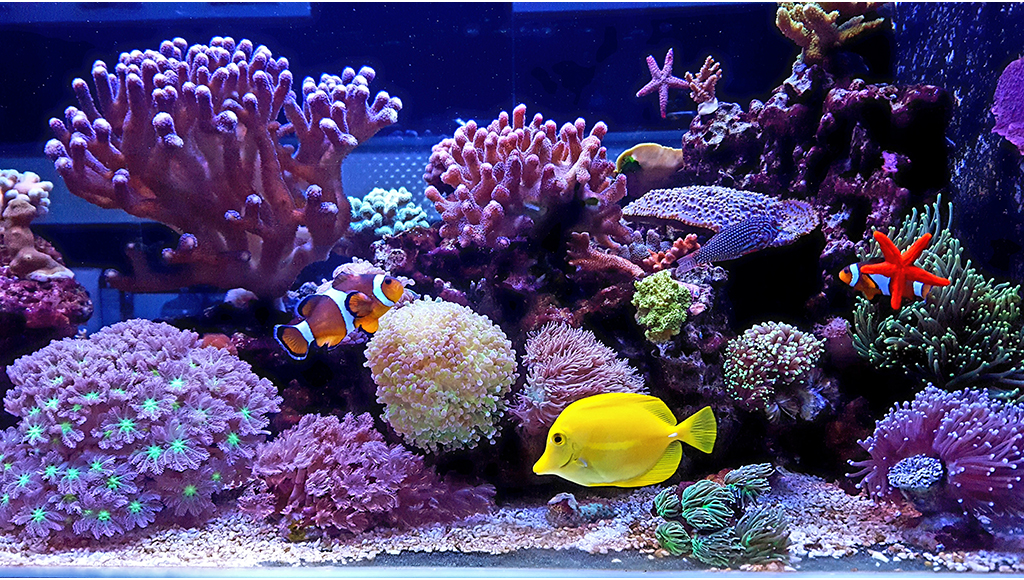Benefits of a Planted Aquarium
Planted aquariums can help provide a cleaner environment for your aquarium inhabitants, increasing oxygen content while decreasing harmful nutrients in the water.

Aquariums offer soothing enjoyment and just the right peaceful pet to keep families entertained. While many people choose to start a freshwater aquarium with the standard colorful plastic plants, there are many benefits associated with keeping a planted aquarium filled with live and thriving plants. Not only are planted aquariums beautiful to look at, but they can help improve the overall water quality and health of the aquarium's inhabitants. Below, let's look at the several benefits of a planted aquarium.
Planted Freshwater Aquariums
Along with providing lush, green, and vibrant coloration in your aquarium, adding live plants to create a planted freshwater aquarium can bring about several benefits, including:
Better Filtration
Just as terrestrial plants help to filter the surrounding air, aquatic plants offer similar filtration. Aquarium plants significantly deplete excessive, detrimental nutrients from the water and replace them with increased oxygen. Live plants can lower the CO2 in the water and help eat up pesky nitrates, nitrites, and phosphates that could degrade your water quality over time. Aquatic plants help provide natural filtration through their roots, utilizing fish waste as helpful fertilizer.
Higher Oxygen Levels
Even though fish live underwater, they rely on oxygen to stay alive, pulled from the water. When your water has a higher oxygen concentration, fish are happier and healthier. As plants absorb CO2, they off-gas beneficial oxygen. Adding aquatic plants to your aquarium gives the water quality a colossal boost, adding plenty of valuable oxygen to the water.
Fresh Food for Fish
While some fish prefer meaty foods, others are pleased with leafy green food. Many fish species will gladly welcome fresh plants in their aquarium to supplement their diet of prepared pellet foods. Fish species, like plecos, silver dollars, and goldfish, will happily devour fresh plants.
Shelter
Some fish are territorial and need a place to claim as their own. Other fish are shy and skittish and require hidden tank areas to take cover. Whatever fish you decide to keep in your aquarium, live plants help provide plenty of shelters. Large leafy plants can help define territories in your tank, allowing you to house potentially aggressive fish together.
Increased Egg Production
Fish like barbs and tetras need to feel safe to lay their eggs in a captive environment. These fish will use the underside of leaves to deposit their eggs until they are ready to hatch. Adding more live plants to your aquarium gives your fish a place to lay eggs, vastly increasing egg production and potential tiny fish babies swimming through your aquarium.
Algae Reduction
Although technically algae is a type of plant, it is usually an unwanted intruder in most home aquariums—algae forms when there is an excess of nutrients in the water, like nitrate and phosphate. By adding live plants that eat up nutrients, you can effectively reduce the algae in the tank. Adding live plants is not only beneficial for the overall water quality but can help make your aquarium look more attractive too.
Know Your Plants
Before adding live plants to your aquarium, it is essential to understand the best plants to keep for your setup. Generally speaking, there are two types of plants, stem plants and root plants.
- Stem Plants - Some species of plants are designated stem plants. Although these plants may have roots, they get most of their nutrients from the water column itself. These types of plants will benefit from liquid fertilizers added to the water. Common stem plants include Bacopa and Green Pennywort.
- Root Plants - Comparatively, some aquatic plants will absorb nutrients from their roots, soaking up materials through the substrate. These plants will benefit from tablet fertilizers buried beneath your gravel or sand. Common root plants include Echinodorus and Cryptocoryne.
Provide The Right Conditions
Keeping aquarium plants is easy, as long as you provide the right conditions in your aquarium. Plants can become incredibly prolific and can thrive and fill your aquarium. Part of keeping your beneficial aquarium plants alive revolves around providing the right conditions in your aquarium. Think about the following, and optimize to keep the species of aquatic plants that interest you most:
- Lighting - Like terrestrial plants, aquatic plants need suitable lighting to survive in an aquarium. Be sure to provide enough lighting in the right wavelength. Usually, aquatic plants need lighting in the red and purple wavelength to prosper. Look for specific lighting designed for freshwater planted aquariums to ensure you give your plants what they need to survive and spread.
- Substrate - Different plants like different substrates. Some prefer sand, while others like gravel. Some people choose to use regular potting soil covered with a layer of sand. There are pros and cons to each type of substrate. Consider your planted aquarium's overall look and feel before finalizing your substrate choice. The substrate can be changed but is a long and destructive process requiring removing your plants. It is easier to determine your substrate choice before starting your aquarium.
- Fertilizer - As mentioned above, plants need fertilizer to grow and thrive. Providing the right kind of fertilizer depends on the plants you decide to keep. Many root fertilizer tabs can last for months, while liquid fertilizer has to be added regularly. Certain fish species cannot tolerate liquid fertilizer, so be sure to read the instruction label before use carefully. Some people may also choose to supplement their water with additional CO2 to let their plants grow and take over.
Ready to start saving money on pet wellness care?
Then take a look at Mint Wellness, the pet wellness plan that provides fast reimbursement on routine pet care. Save on vaccinations, wellness exams, preventatives, dental, and more!
Learn More


